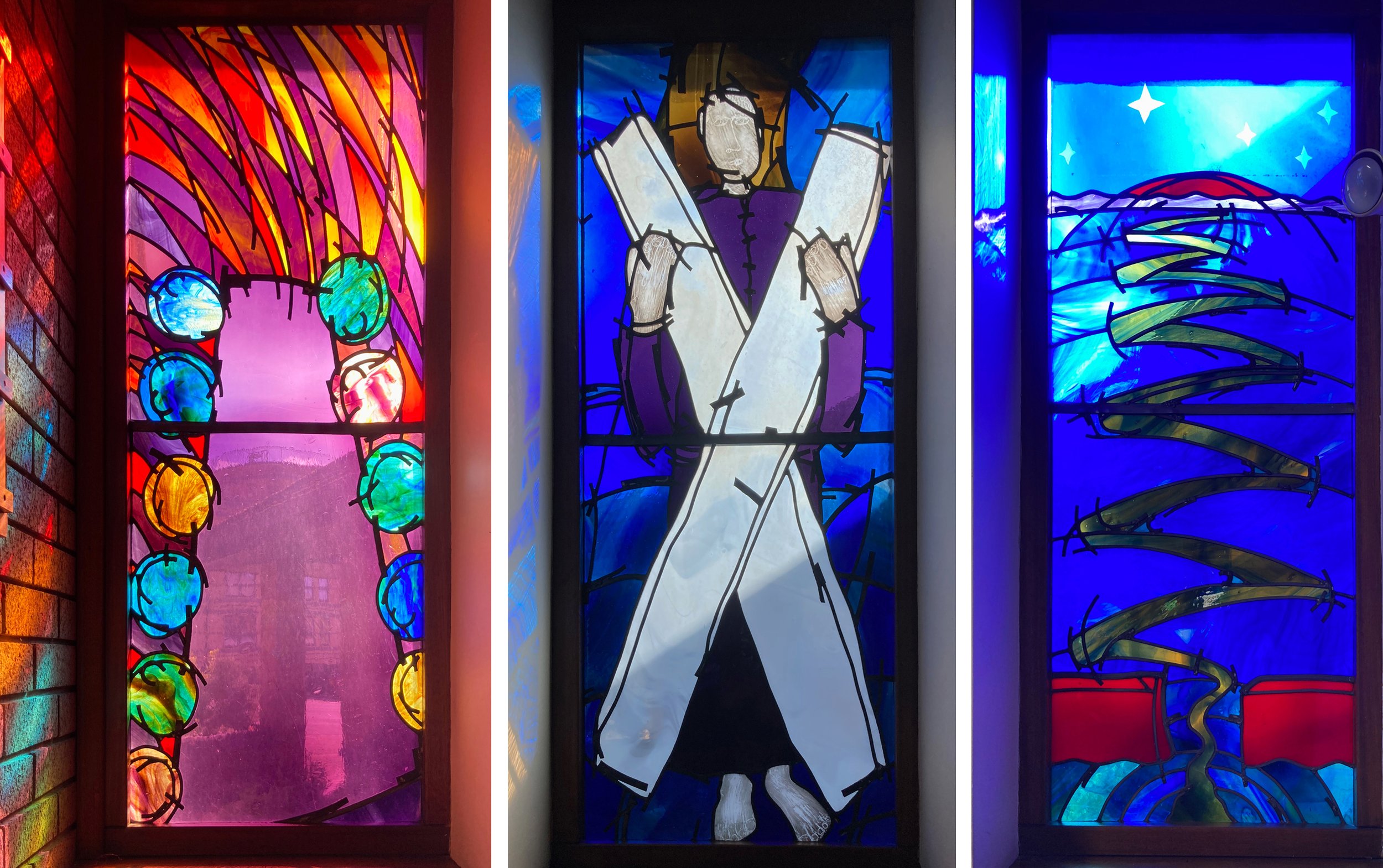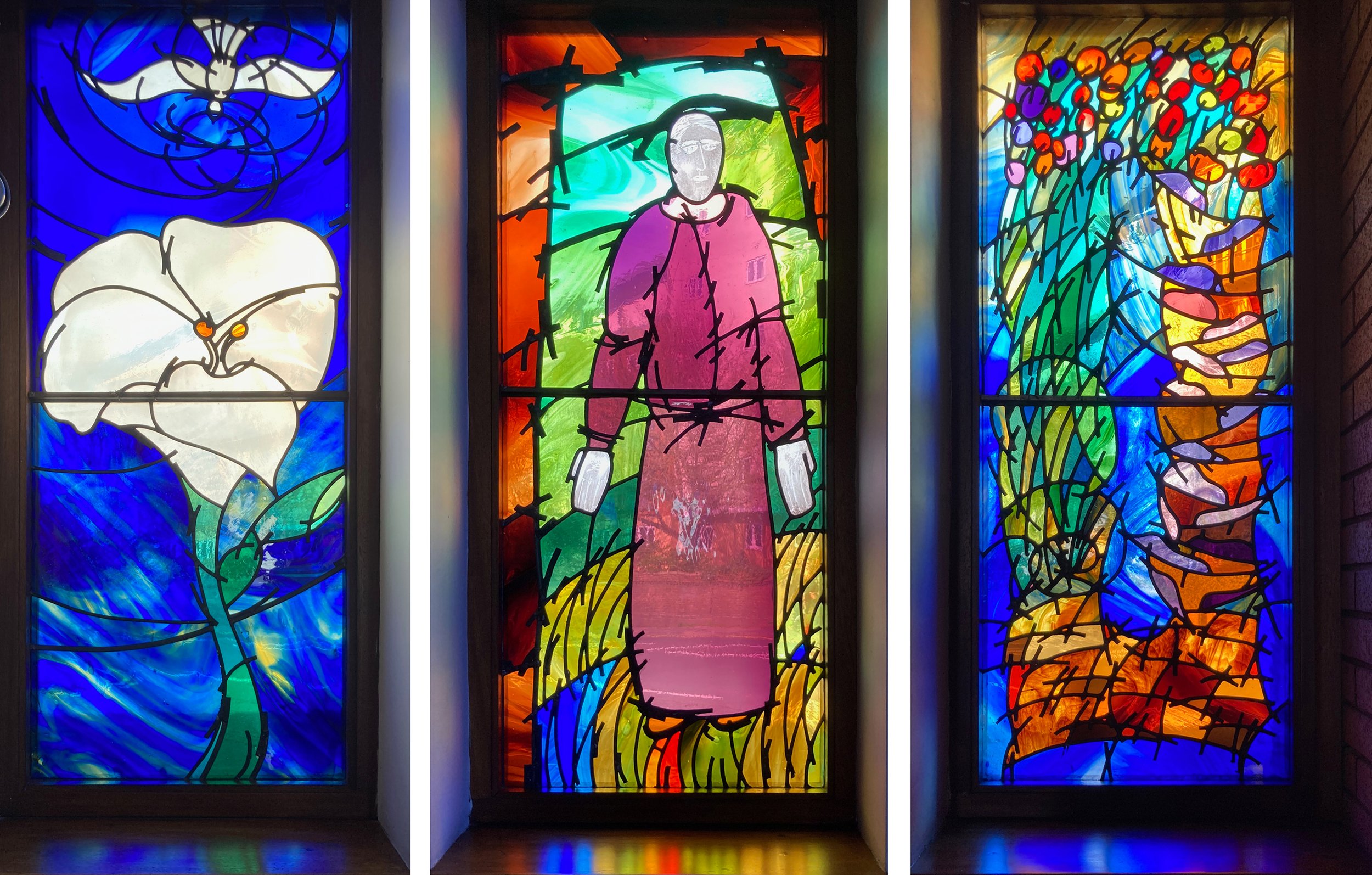Slough, looking towards St Mary’s Church from Trinity United Reformed Church and the same view through the stained glass inside.
Slough is the home to some of the finest twentieth and early twenty first century stained glass; Alfred Wolmark’s celebrated 1915 abstract window in St Mary’s Church; one of my largest handmade commissions now in storage as the building it was in, a community type centre called ‘The Centre’, has been knocked down; and Trinity United Reformed Church with all of its windows by the British artist Mark Angus.
Trinity United Reformed Church. Three walls, all eleven windows by Mark Angus, 1995 and 2002.
I was interested to see Mark’s work in a modern, fairly neutral building where the windows get no help from the atmosphere inside in getting a religious message across, which is one of his stated aims. The church member who showed us in said how much the congregation liked the windows and that they had invited Mark back to complete the set when more money was raised around 2002.
The windows are like pictures in an exhibition, not visually linked to each other in what seems an unusual decision for the space. The symbols and signs that indicate the meaning of the windows (still, an explanatory card seems to be needed for each one) take precedence over an interior design approach and the result is quite exciting.
East facing corner; blue window representing The Ascension in to Heaven with St Mary’s spire visible through it.
The full height Ascension window (above left) works brilliantly, with big bits of streaky blue blown glass and liberal use of the device that links all these windows - little strips of lead floating across the main lead lines in a technique that was intended to ‘liberate the lead line’. The only painting that I could see was a faint wash with sgraffito details for hands and faces, the only etching those stars in the window below right. This means the stained glass is more transparent than it often is, how good to see the buildings outside, and to see the strong colours reflected on to the window reveals and sills even on the north side of the church.
I’ve included a photo of each of the small windows below - do they go together and do they need to?
South east wall; St Andrew in the middle.
North west wall; windows commemorating Reverend Jamie Ross, Minister’s wife Ina Ross and Moira Stephen, ‘Spirit of Dance’. I think these are the three windows made in 2002.
North west wall, "‘Cycle of Life’ window on the right.
Details from the last two windows on the north west wall.

























